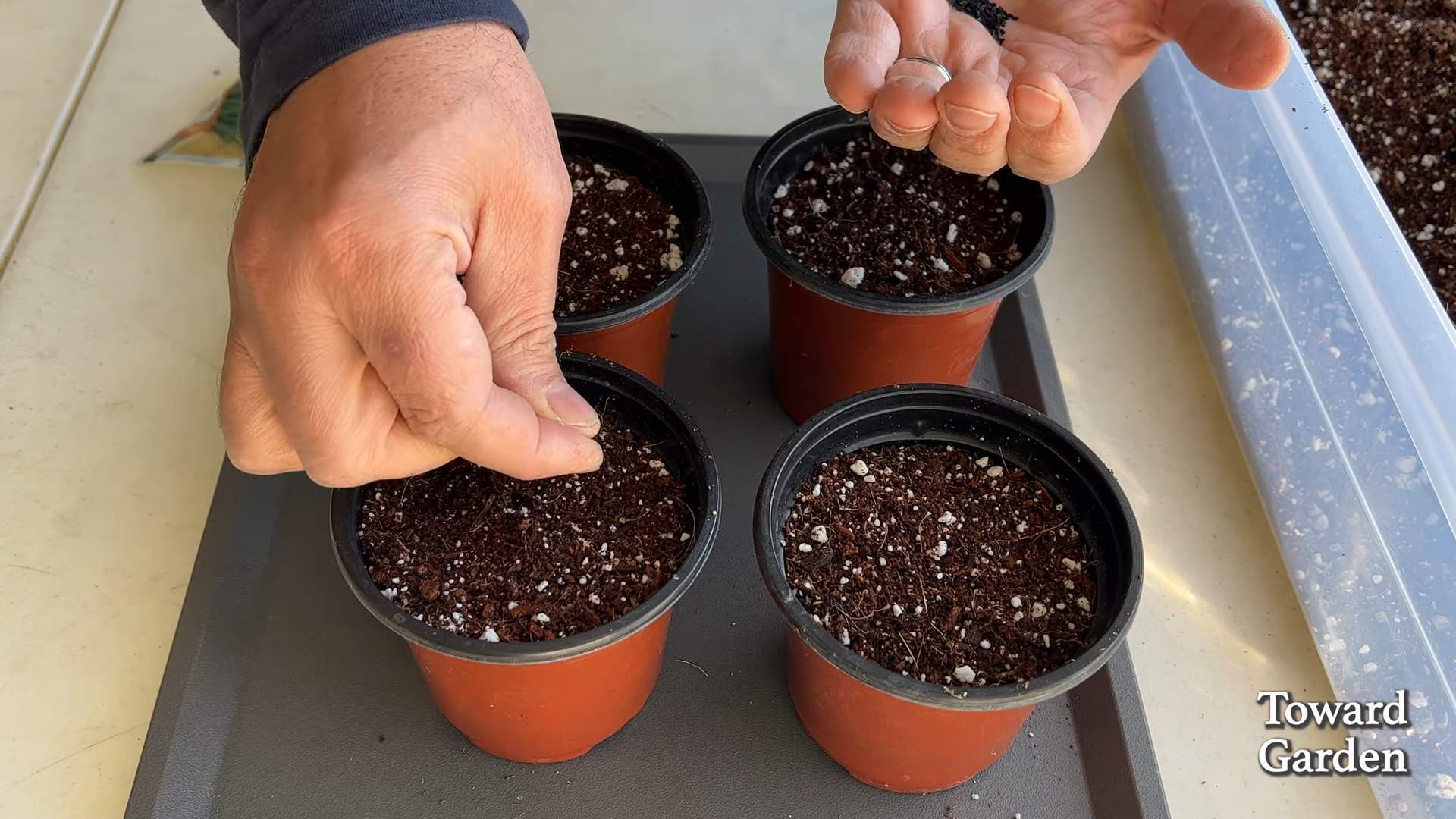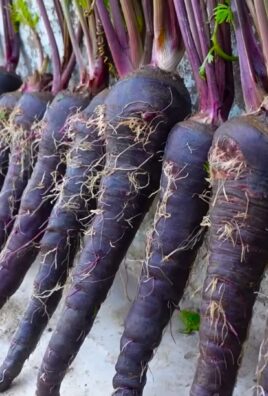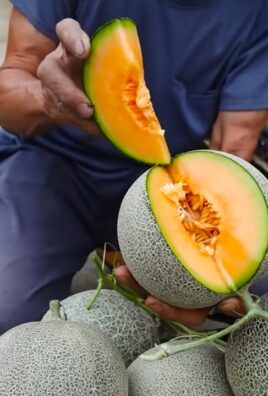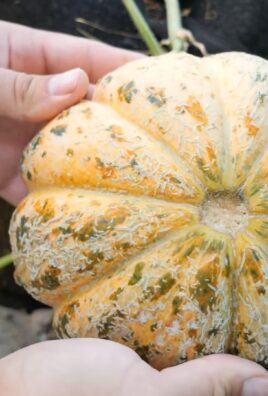Grow Chives Kitchen Garden: Imagine stepping into your kitchen, needing a sprinkle of fresh, flavorful chives to elevate your dish, and simply snipping them right from your windowsill. Sounds dreamy, right? Well, it doesn’t have to be just a dream! I’m here to show you how incredibly easy it is to cultivate your own thriving chives right in your kitchen, no matter how small your space might be.
For centuries, chives have been a culinary staple, adding a delicate oniony zest to dishes across cultures. From ancient Roman gardens to modern-day kitchens, these versatile herbs have proven their worth. But beyond their delicious flavor, growing your own chives offers a sense of connection to nature and a rewarding feeling of self-sufficiency.
In today’s fast-paced world, finding moments of calm and creativity is more important than ever. That’s where this DIY guide comes in. Learning to grow chives kitchen garden is not only a fun and fulfilling project, but it also provides you with a constant supply of fresh herbs, saves you money on grocery bills, and reduces your environmental impact by eliminating the need for store-bought produce. Plus, who doesn’t love the idea of adding a touch of green to their kitchen decor? So, let’s dive in and discover the simple secrets to creating your own flourishing chives haven!

Grow Your Own Chives: A Beginner’s Guide to a Thriving Kitchen Garden
Hey there, fellow gardening enthusiasts! I’m so excited to share my experience with growing chives right in my kitchen. It’s surprisingly easy, incredibly rewarding, and adds a burst of fresh flavor to so many dishes. Plus, having fresh herbs on hand is a total game-changer! Let’s dive into how you can create your own thriving chive patch indoors.
What You’ll Need
Before we get started, let’s gather all the necessary supplies. Trust me, having everything ready beforehand will make the process much smoother.
* **Chive Seeds or a Chive Plant:** You can start from seeds, which is more budget-friendly, or buy a small established plant for quicker results. I’ve done both, and honestly, both work great!
* **Pot with Drainage Holes:** Choose a pot that’s at least 6 inches in diameter and 6 inches deep. Good drainage is crucial to prevent root rot.
* **Potting Mix:** Use a high-quality potting mix specifically formulated for herbs or vegetables. Avoid using garden soil, as it can compact and hinder drainage.
* **Watering Can or Spray Bottle:** For gentle watering.
* **Sunny Windowsill or Grow Light:** Chives need at least 6 hours of sunlight per day. If you don’t have a sunny windowsill, a grow light will do the trick.
* **Optional: Seed Starting Tray and Dome (if starting from seeds):** These can help with germination.
* **Optional: Plant Label:** To remind you what you planted!
Starting from Seeds: A Step-by-Step Guide
Starting from seeds is a bit more time-consuming, but it’s also super satisfying to watch your little chives sprout and grow. Here’s how I do it:
1. **Prepare the Seed Starting Tray (Optional):** If you’re using a seed starting tray, fill each cell with potting mix. Moisten the soil gently with a spray bottle.
2. **Sow the Seeds:** Sprinkle 2-3 chive seeds per cell (or directly into your pot if you’re skipping the tray). Cover the seeds with a thin layer of potting mix (about 1/4 inch).
3. **Water Gently:** Use a spray bottle to mist the soil again. You want the soil to be moist but not soggy.
4. **Cover with a Dome (Optional):** If you’re using a dome, place it over the tray to create a humid environment. This will help with germination.
5. **Place in a Warm Location:** Keep the tray or pot in a warm spot (around 70-75°F) with indirect sunlight.
6. **Maintain Moisture:** Check the soil daily and mist with water as needed to keep it moist.
7. **Wait for Germination:** Chive seeds typically germinate in 7-14 days. Be patient!
8. **Remove the Dome (If Used):** Once the seedlings emerge, remove the dome to allow for better air circulation.
9. **Thin the Seedlings (If Necessary):** If multiple seedlings sprout in one cell, thin them out by snipping off the weaker ones at the soil level. This will give the remaining seedlings more room to grow.
10. **Transplant to a Larger Pot (If Started in a Tray):** Once the seedlings are a few inches tall and have developed several sets of leaves, carefully transplant them to your chosen pot.
Planting a Chive Plant: A Quick and Easy Method
If you’re impatient like me sometimes, buying a small chive plant is the way to go. It’s a faster route to fresh chives!
1. **Prepare the Pot:** Fill your pot with potting mix, leaving about an inch of space at the top.
2. **Remove the Chive Plant from its Container:** Gently squeeze the sides of the container to loosen the plant. Carefully remove the plant, trying not to disturb the roots too much.
3. **Loosen the Roots (Optional):** If the roots are tightly bound, gently loosen them with your fingers.
4. **Plant the Chive Plant:** Place the chive plant in the center of the pot. Make sure the top of the root ball is level with the soil surface.
5. **Fill with Potting Mix:** Fill in the remaining space around the plant with potting mix.
6. **Water Thoroughly:** Water the plant thoroughly until water drains out of the drainage holes.
Caring for Your Chives: Ensuring a Healthy Harvest
Now that your chives are planted, it’s time to learn how to care for them. Proper care will ensure a continuous supply of fresh chives.
1. **Sunlight:** Chives need at least 6 hours of sunlight per day. Place your pot on a sunny windowsill or under a grow light. If you’re using a grow light, position it about 6-12 inches above the plant.
2. **Watering:** Water your chives when the top inch of soil feels dry to the touch. Avoid overwatering, as this can lead to root rot. Water thoroughly until water drains out of the drainage holes.
3. **Fertilizing:** Feed your chives with a balanced liquid fertilizer every 2-4 weeks during the growing season (spring and summer). Follow the instructions on the fertilizer label.
4. **Pruning:** Regular pruning is essential for keeping your chives healthy and productive. Snip off the tips of the leaves regularly to encourage new growth.
5. **Deadheading:** If your chives start to flower, remove the flower heads to prevent the plant from going to seed. This will also encourage more leaf growth.
6. **Repotting:** As your chives grow, they may outgrow their pot. Repot them into a larger pot every year or two.
7. **Pest Control:** Chives are generally pest-resistant, but they can occasionally be affected by aphids or spider mites. If you notice any pests, spray the plant with insecticidal soap.
Harvesting Your Chives: Enjoying the Fruits (or Herbs!) of Your Labor
The best part of growing your own chives is, of course, harvesting them! Here’s how to do it:
1. **Wait Until the Chives are Established:** Don’t start harvesting until the chives are at least 6 inches tall.
2. **Use Scissors or Shears:** Use sharp scissors or shears to cut the chives near the base of the plant.
3. **Harvest Regularly:** Harvest chives regularly to encourage new growth. You can harvest up to one-third of the plant at a time.
4. **Use Fresh or Freeze:** Use your freshly harvested chives immediately or freeze them for later use. To freeze chives, chop them up and place them in a freezer bag. They’ll keep in the freezer for several months.
Troubleshooting: Common Chive Growing Problems
Even with the best care, you might encounter some problems while growing chives. Here are some common issues and how to fix them:
* **Yellowing Leaves:** This can be caused by overwatering, underwatering, or nutrient deficiencies. Adjust your watering schedule and fertilize your chives regularly.
* **Leggy Growth:** This is usually caused by insufficient sunlight. Move your chives to a sunnier location or use a grow light.
* **Slow Growth:** This can be caused by poor soil, insufficient sunlight, or lack of nutrients. Repot your chives with fresh potting mix, move them to a sunnier location, and fertilize them regularly.
* **Root Rot:** This is caused by overwatering. Make sure your pot has good drainage and avoid overwatering. If you suspect root rot, repot your chives with fresh potting mix.
Chive Varieties: Exploring Different Flavors
While common chives (Allium schoenoprasum) are the most popular, there are other varieties you might want to try:
* **Garlic Chives (Allium tuberosum):** These have a mild garlic flavor and are great in Asian dishes.
* **Siberian Chives (Allium nutans):** These have a stronger onion flavor and are very cold-hardy.
* **Giant Siberian Chives (Allium ledebourianum):** As the name suggests, these are larger than regular Siberian chives.
Culinary Uses: Adding Chives to Your Dishes
Chives are incredibly versatile and can be used in a wide variety of dishes. Here are some of my favorite ways to use them:
* **Garnish:** Sprinkle chopped chives on soups, salads, baked potatoes, and omelets.
* **Flavoring:** Add chopped chives to dips, sauces, and dressings.
* **Ingredient:** Use chopped chives in quiches, frittatas, and other egg dishes.
* **Herb Butter:** Mix chopped chives with softened butter for a delicious herb butter.
Final Thoughts: Enjoying Your Homegrown Chives
Growing chives in your kitchen is a simple and rewarding way to add fresh flavor to your meals. With a

Conclusion
So, there you have it! Growing your own chives in a kitchen garden is not just a fun project; it’s a game-changer for your culinary adventures. Forget those sad, wilted bunches from the supermarket. Imagine snipping fresh, vibrant chives right before adding them to your omelets, soups, salads, or baked potatoes. The difference in flavor is truly remarkable – a bright, oniony zest that elevates even the simplest dishes.
This DIY trick is a must-try because it offers so much more than just convenience. It’s about connecting with your food, reducing waste, and enjoying the satisfaction of nurturing something from seed to table. Plus, it’s incredibly easy and requires minimal space, making it perfect for even the smallest apartments.
But don’t stop there! Once you’ve mastered the art of growing chives, why not experiment with different varieties? Garlic chives offer a milder, garlicky flavor, while Siberian chives boast a more robust, oniony punch. You can also try growing them in different containers – from repurposed yogurt cups to stylish terracotta pots – to add a touch of personality to your kitchen garden. Consider companion planting your chives with other herbs like parsley or basil to create a thriving, fragrant oasis.
Ready to transform your kitchen into a haven of fresh flavor? We wholeheartedly encourage you to give this DIY trick a try. It’s a simple, rewarding, and delicious way to enhance your cooking and connect with nature.
And most importantly, we want to hear about your experience! Share your photos, tips, and stories in the comments below. Let us know what varieties you’re growing, what dishes you’re using your fresh chives in, and any challenges you’ve overcome. Together, we can create a community of passionate home gardeners, sharing our knowledge and inspiring others to embrace the joy of growing their own food. So, grab your seeds, get your hands dirty, and prepare to be amazed by the simple magic of growing chives in your very own kitchen garden!
Frequently Asked Questions (FAQs)
What is the best time of year to plant chives?
The best time to plant chives depends on whether you’re starting from seed or transplanting established plants. If starting from seed indoors, begin 6-8 weeks before the last expected frost. This allows the seedlings to develop a strong root system before being transplanted outdoors. If transplanting, the ideal time is in the spring or fall when the weather is mild and the soil is workable. Avoid planting during the hottest months of summer, as the plants may struggle to establish themselves.
How much sunlight do chives need?
Chives thrive in full sun, which means they need at least 6-8 hours of direct sunlight per day. However, they can also tolerate partial shade, especially in hotter climates. If you’re growing chives indoors, place them near a sunny window or under a grow light to ensure they receive adequate light. Insufficient sunlight can result in leggy, weak growth and reduced flavor.
What kind of soil is best for growing chives?
Chives prefer well-draining soil that is rich in organic matter. A slightly acidic to neutral pH (around 6.0-7.0) is ideal. Before planting, amend the soil with compost or well-rotted manure to improve its fertility and drainage. If you’re growing chives in containers, use a high-quality potting mix that is specifically formulated for herbs or vegetables. Avoid using heavy clay soil, as it can become waterlogged and lead to root rot.
How often should I water chives?
Chives need consistent moisture to thrive, but they don’t like to be waterlogged. Water them deeply whenever the top inch of soil feels dry to the touch. During hot, dry weather, you may need to water them more frequently. Avoid overhead watering, as it can promote fungal diseases. Instead, water at the base of the plant to keep the foliage dry.
How do I harvest chives?
Harvesting chives is easy! Simply snip the leaves with scissors or garden shears, cutting them back to about 2 inches from the base of the plant. You can harvest chives regularly throughout the growing season, as this encourages new growth. Avoid cutting more than one-third of the plant at a time, as this can weaken it. The more you harvest, the more they will grow!
Do chives need fertilizer?
Chives are not heavy feeders, but they will benefit from occasional fertilization. In the spring, apply a balanced organic fertilizer or compost tea to provide them with essential nutrients. Avoid over-fertilizing, as this can lead to excessive foliage growth at the expense of flavor. You can also side-dress the plants with compost or well-rotted manure during the growing season to provide a slow-release source of nutrients.
How do I prevent chives from flowering?
While chive blossoms are beautiful and edible, they can detract from the flavor of the leaves. To prevent chives from flowering, regularly snip off the flower buds as soon as they appear. This will encourage the plant to focus its energy on producing more leaves. If you do allow the chives to flower, you can still harvest the leaves, but they may have a slightly stronger, more pungent flavor.
Can I grow chives indoors during the winter?
Yes, you can easily grow chives indoors during the winter. Simply dig up a clump of chives from your garden in the fall and transplant it into a pot. Place the pot in a sunny window or under a grow light and water regularly. You can continue to harvest the chives throughout the winter, providing you with a fresh supply of herbs even when the weather outside is cold and snowy.
Are chives susceptible to any pests or diseases?
Chives are generally pest and disease resistant, but they can occasionally be affected by aphids, onion thrips, or fungal diseases. To prevent pest problems, inspect your plants regularly and remove any infested leaves. You can also spray the plants with insecticidal soap or neem oil to control aphids and thrips. To prevent fungal diseases, ensure good air circulation around the plants and avoid overhead watering.
How do I propagate chives?
Chives can be easily propagated by division. In the spring or fall, carefully dig up a clump of chives and divide it into smaller clumps, each with several healthy shoots and roots. Replant the clumps in separate locations or containers. You can also propagate chives from seed, but this method takes longer.
Can I freeze chives for later use?
Yes, freezing chives is a great way to preserve them for later use. Simply wash and dry the chives, then chop them into small pieces. Spread the chopped chives on a baking sheet and freeze them for a few hours until they are solid. Transfer the frozen chives to a freezer bag or container and store them in the freezer for up to six months. You can add the frozen chives directly to your dishes without thawing.
What are some creative ways to use fresh chives?
Fresh chives are incredibly versatile and can be used in a wide variety of dishes. Add them to omelets, scrambled eggs, or quiches for a burst of flavor. Sprinkle them over soups, salads, or baked potatoes. Use them as a garnish for grilled meats, fish, or vegetables. Mix them into cream cheese, sour cream, or yogurt to create a delicious dip or spread. You can even use chive blossoms to make a beautiful and flavorful vinegar or oil infusion. The possibilities are endless!




Leave a Comment